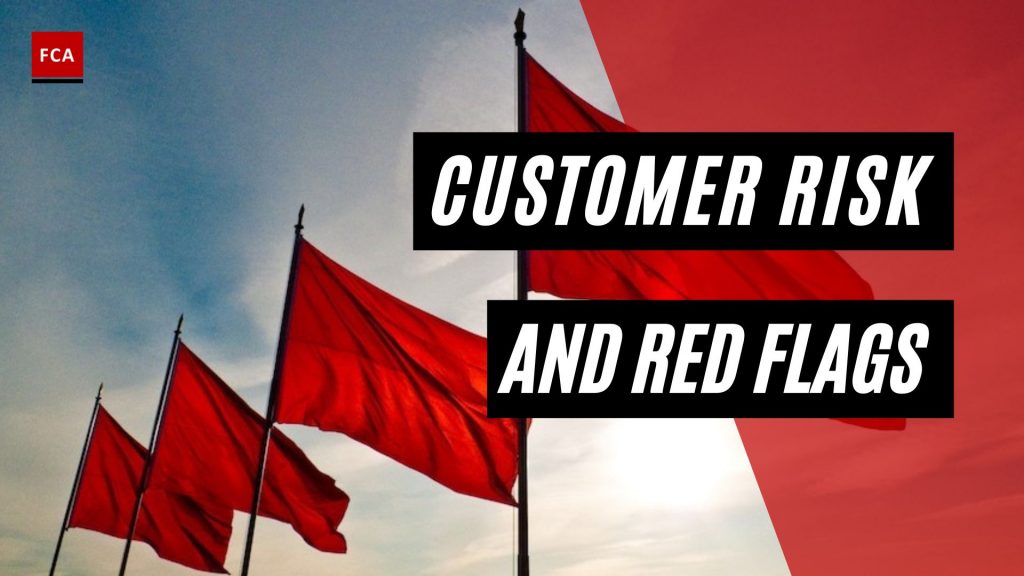In the context of anti money laundering or AML and counter terrorist financing or CTF, customer risk refers to the possibility that a specific customer or group of customers would engage in money laundering or terrorism financing operations.
Customers in the high-risk category, such as PEPs, must undergo heightened due diligence processes in accordance with AML/CTF regulatory standards. EDD measures must be included in the Compliance Program and AML/CTF policy in the event of the issuing of red flags and the designation of consumers as high-risk customers.
‘Blacklist’ by International supervisory agencies
Any operation involving the exchange or recording of financial amounts that are initiated or processed is referred to as a transaction. Customer risk is determined by the customer’s kind and the jurisdiction in which they reside. Customers from high-risk jurisdictions or nations, or those that have been designated as “blacklisted” by international supervisory agencies or regulators, face a high level of risk.
Transaction Threshold
A transaction threshold is a monetary value assigned to the accounts or customers based on the risk profile. Every customer has a different risk profile, which is created considering the identification information and other details obtained at the time of onboarding the customer or client. Red flags are raised due to the breach of the transaction threshold assigned to the customers based on their respective risk profiles.
Threshold limits for customer transactions
Transactions and activities of the customers or clients must be within the threshold limit assigned to them based on the income level or the estimated business activity of the customers. Customers at the time of opening their accounts mention their income level or expected business volume, which enables the account opening time to define the financial threshold as a benchmark of monitoring for each customer.
The benchmark thresholds are linked with the account of the customers in the system so that whenever a transaction is occurred breaching the linked threshold, then alert is generated by the system for review and investigation purposes. The MLRO or AML Team reviews the account activity based on the alert generated to identify any potential money laundering risk or suspicious transaction.

Red Flags
The following are the minimum list of instances, where red flags should be raised, for investigation by the AML team:
- The deposit or withdrawal of substantial amounts of cash from an account
- The refusal to provide CDD documentation on beneficial owners/controllers; and (c) the frequency with which deposits or withdrawals are made that is inconsistent with the financial institution’s understanding of the customer and their circumstances transactions involving the unaccounted-for transportation of money, whether in cash or through wire transfers
- Payments received from or requests to make payments to a third party unknown or unrelated to the company. FSC AML/CTF Handbook, Chapter 78
- Money flows associated with personal and commercial activities that are difficult to differentiate from one another
- Client financial behavior that is inconsistent with the lawful or anticipated activity of the customer is classified
- After a time of dormancy, a company account or commercial connection is brought back to life
- The client is unable or unwilling to give information or plausible reasons to establish a business relationship, open an account, or execute a transaction with the merchant
- For no prominent business or another purpose, the client maintains a large number of accounts
- Bank draughts that have been cashed in for foreign money
- The early surrender of an insurance policy results in a significant financial loss
- A pattern of frequent early loan repayments
- Transfers are regularly made that are labeled as loans from family members
- Funds have been transferred to a charity or non-profit organization linked to a terrorist organization
- A significant amount of money has been put on shop value cards
- In an insurance policy, the payment to a third party is requested as part of the policy’s closure
- A large quantity of money comes from unknown sources
- Obtained a loan and paid back the remaining amount in cash
- The purchase of high-value assets, followed by an instant resale for which payment is sought by check, is described
Final Thoughts
Customers in the high-risk category, such as PEPs, must go through heightened due diligence processes in accordance with AML/CFT regulatory standards. The reason is that there is a possibility that a specific customer or group of customers would engage in money laundering or terrorism financing operations.









